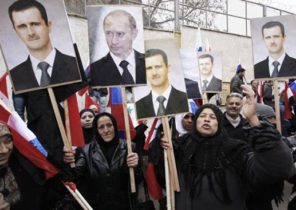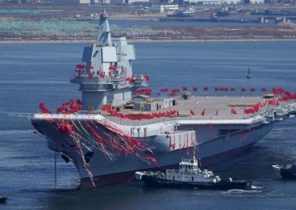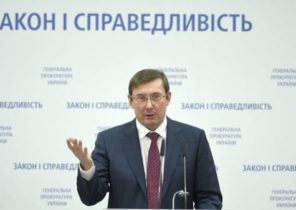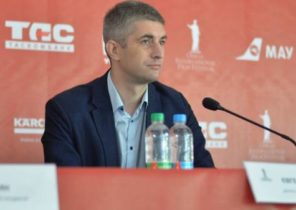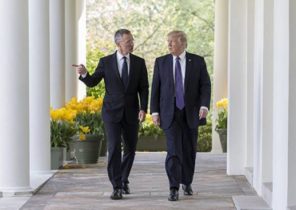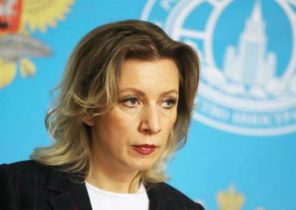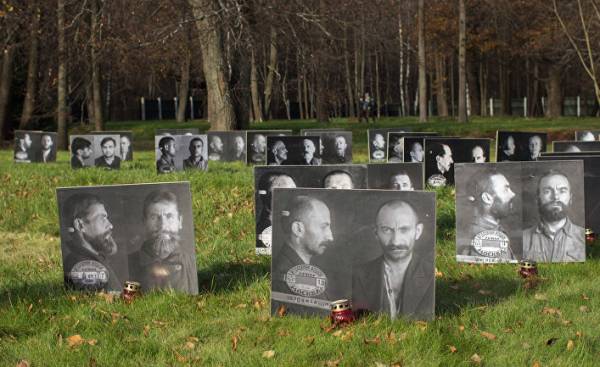
BUTOVO — Father Kirill holds in his hand a piece of paper with printed text. “Victor, Basil, Nicholas, Constantine, Simon”, says the priest in front of a wooden cross, erected in an idyllic oak grove.
He should call 91 name because that’s how many people were executed here August day 80 years ago — the day for mass elimination of the so-called “enemies of the people” began to use the ground of the secret services of the NKVD in Butovo.
The next day there was eliminated 115 people, and since then in the area near the village, located a little South of Moscow, regularly heard the shots: there were mass executions.
Known the names of the nearly 21 thousand prisoners, after the simplified legal processes and in most cases on trumped-up charges — he was shot in Butovo from August 1937 to November 1938, when the mass killings ended.
“We pray for all of them. For those whose names we know and those whose names are unknown to us”, a singsong voice said father Cyril.
In other areas near the landfill are buried about 10 thousand shot, and such graves as these, in the countries of the former Soviet Union a great many.
“Our whole country was covered with a web of executed people”, — said Marina Suslova of Moscow city Council present at today’s memorial event.
Only it is believed that the NKVD about 15 months 1937/38. destroyed 600 thousand people, and several million were sent to labor camps, in particular in Siberia.
The most known episodes of this period were the three great show trials of the so-called “Moscow trials”, when a number of famous Soviet leaders were nominated by various absurd charges of espionage and sabotage, than they admitted.
But cleaning was stabbed as those who were above and those who were down on Communists and believers, known art workers, and the workers or farmers.
“Here, in this place, we remember people of all nationalities, all social classes and all religions, and many atheists” — said Marina Suslova.
In addition to the mass graves at Butovo, the remains of 250 German Communists (who had inadvertently moved into Stalin’s Soviet Union), a number of Latvian artists and about 1,000 clergy that the Orthodox Church is now considered martyrs.
The evil dwarf
The concept of “great terror” has spread due to the British historian Robert Conquest (Robert Conquest), wrote in конце1960 years of his pioneering work.
In Russia, the murder at the end of the 1930-ies known as “yezhovshchina”.
Because nobody was so involved in mass executions as head of the NKVD Nikolai Yezhov, who headed the campaign against “enemies of the people”, until he fell into disfavor and was executed in 1940.
THE DICTATOR STALIN
• Joseph Stalin was born in Georgia in 1879, and the autocratic rules of the Soviet Union from 1924 to 1953.
• В1929-30. he was in charge of forced collectivization that led to the fact that several million people were deported, and many lives.
• In 1932-33 famine, provoked by the Kremlin, killed 6 to 8 million people, especially in Ukraine.
• During the purges of 1937-38, more than 600,000 people were executed and millions were deported.
• In total the Stalin regime cost the lives of at least 20 million people.
Sources: Britannica, Robert Conquest, JP
The chief of police was a grim personality, to whom people gave the nickname “angry dwarf” is ascribed to him direct participation in the torture, and executions.
Its growth was only 151 cm, according to the Russian source of the time, he was “gray-green eyes, clever as a Cobra, which is literally dug into the source”.
Yezhov was infinitely loyal to Stalin and was operated under the motto “Better too far than to go far enough”.
But historians are unanimous that it would be wrong to attribute the main responsibility for the terror in 1937 only to him.
Stalin and other Politburo members of the Communist party have also signed a large number of so-called death list with the names of people who had to be eliminated, and they bear full political responsibility for these heinous crimes.
“There is no indication that Ezhov ever went beyond the role of guns Stalin,” writes the historian Nikita Petrov, the author of monographs on the chief of the NKVD.
Speech about excessive demonization is not
Although cleansing 1937/38, he became a decisive turning point in Soviet and Russian history, authorities have maintained almost complete silence about the date.
Today, shares of Stalin’s Russia’s population growing, the Kremlin, and he thoroughly threw firewood into the fire under the cauldron of propaganda, which for many years uncritically absolutely was famous for the achievements of the dictator during world war II.
Not later, during an interview with the American Director Oliver stone, shown in several countries in June of this year, President Vladimir Putin warned against “exaggerated demonization” of Stalin.
In many Russian regions put forward the initiative of creation of monuments to the dictator, often these initiatives enjoy great support in the field.
A public opinion poll conducted last month shows that 62% of Russians opposed the creation of a monument to victims of Stalinist crimes.
“We must not forget this tragedy. And we will not forget,” said Marina Suslova.
But in Russia today, this view has again become the minority view.
